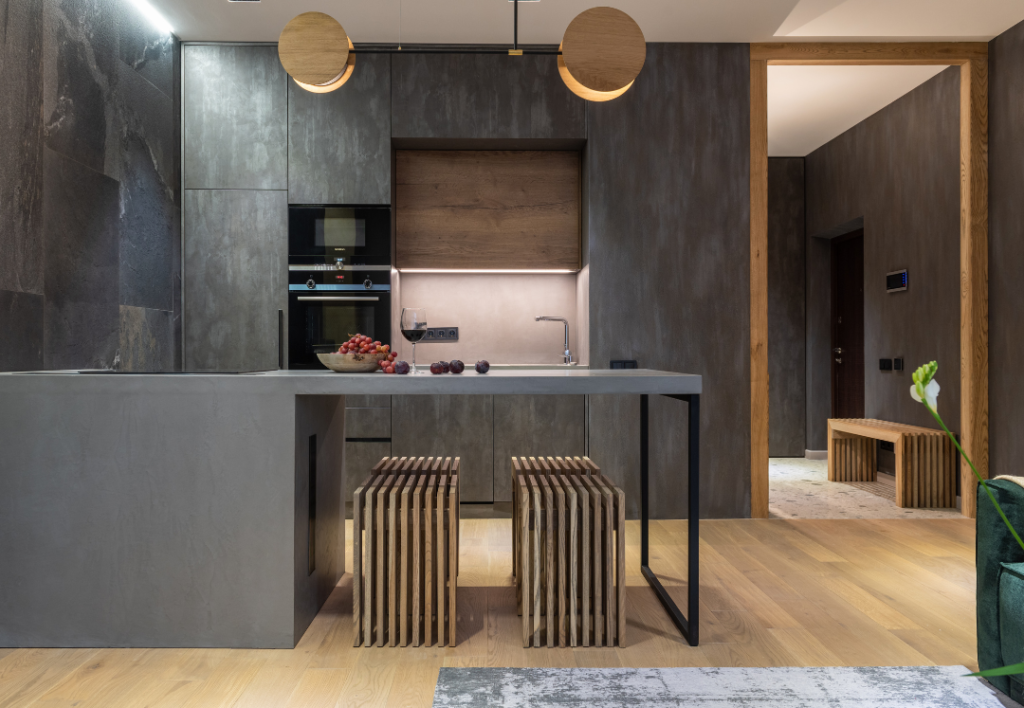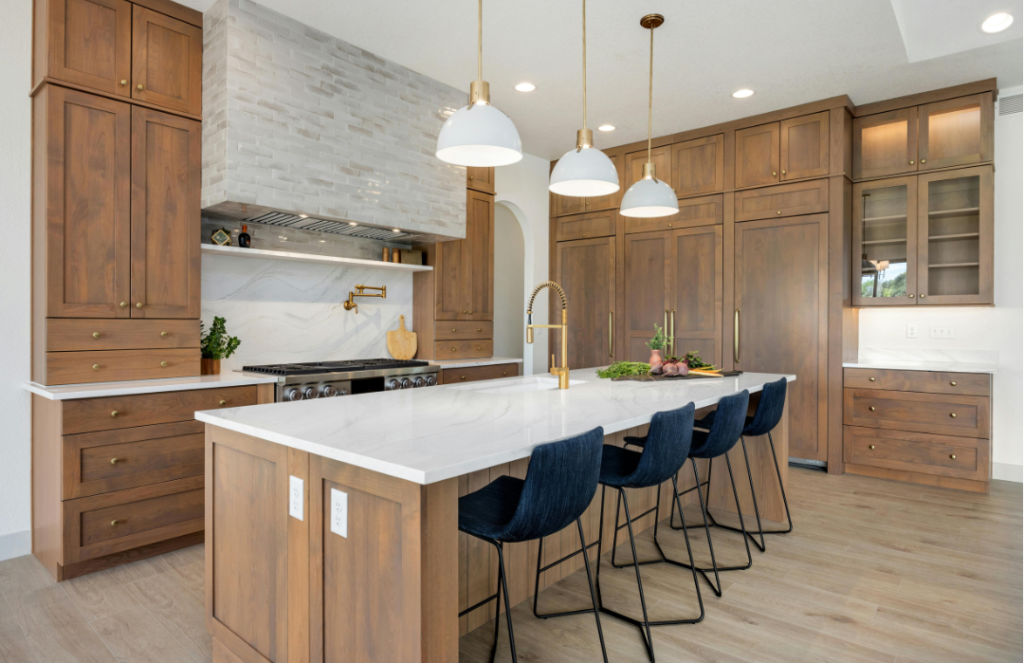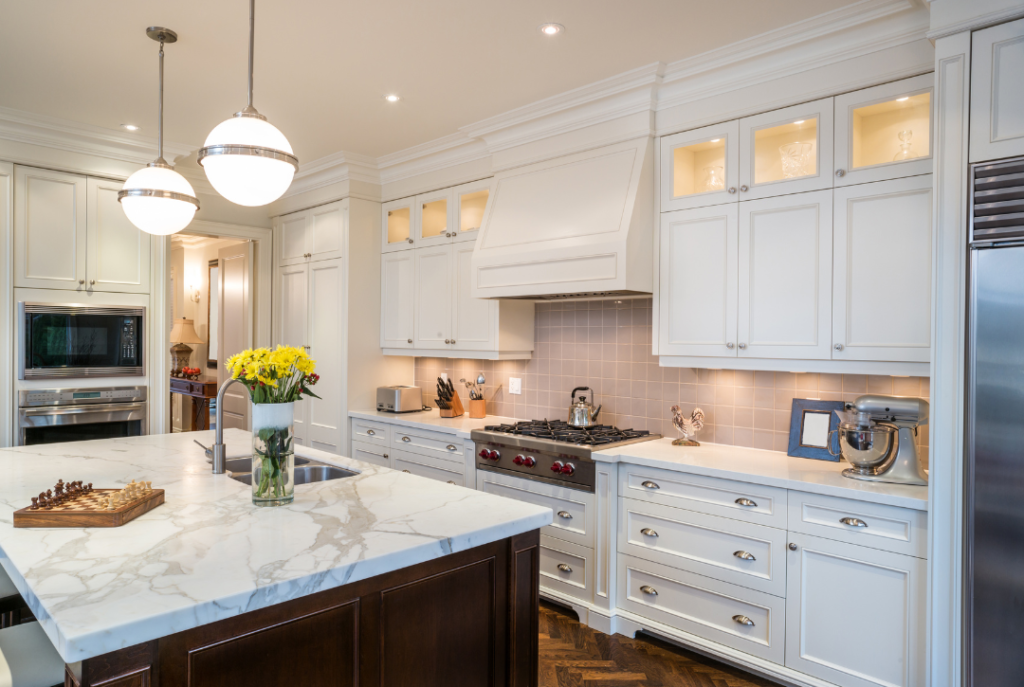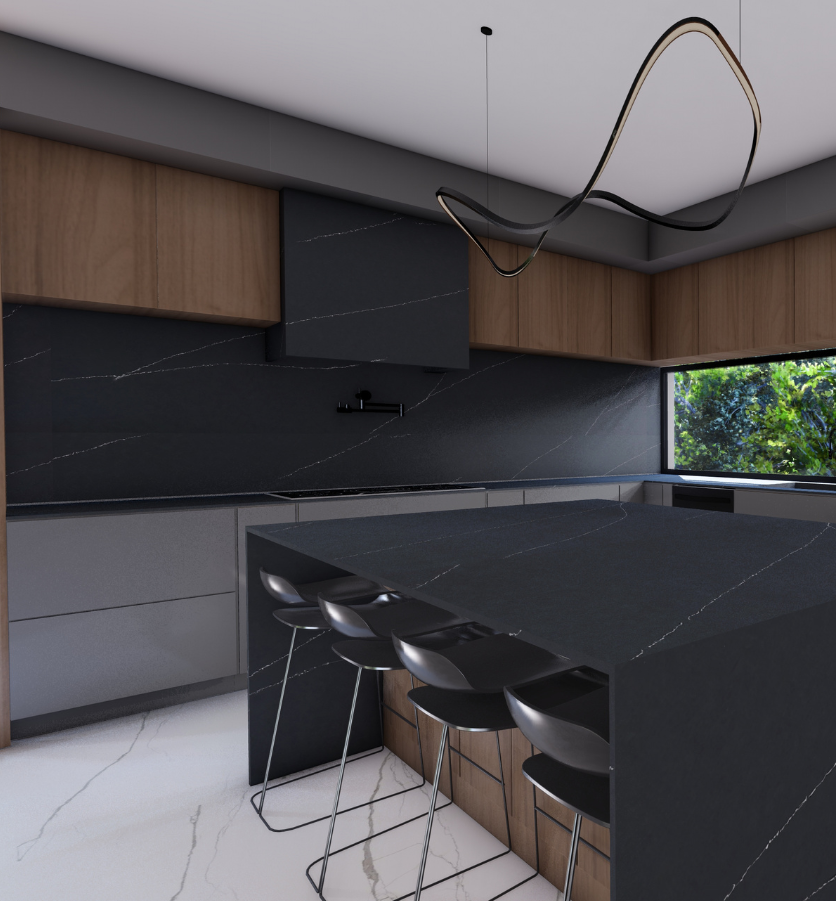The kitchen is more than just a place to cook — it’s the heart of the home, a gathering space, and a reflection of your personal style. While appliances are essential, some can disrupt the visual harmony of the space — especially the range hood.
That’s where covering the kitchen hood comes in. By designing a custom cover for your hood, you can turn a utilitarian appliance into a design feature that complements your kitchen’s aesthetic. But it’s not just about looks — it’s also a practical choice.
In this post, we’ll explore the aesthetic and functional benefits of covering your kitchen hood and how it can transform the feel of your entire space.

Aesthetic Benefits of Covering the Hood
1. Seamless Design Integration
An exposed hood, especially in stainless steel, can feel cold or industrial in a cozy home kitchen. A covered hood blends beautifully into the overall design, whether you’re working with farmhouse charm, modern minimalism, or classic elegance.
You can match it with your cabinets, backsplash, or walls, creating a seamless and intentional design flow.
2. A Polished, Custom Look
Custom hood covers add a level of craftsmanship and personalization. From wooden beams and trim details to curved plaster or shiplap panels, a covered hood adds a designer touch that sets your kitchen apart.
3. Design Focal Point
Instead of trying to hide the hood, you can use the cover to highlight it. A bold color, unique shape, or textured finish can make it the centerpiece of your kitchen — just like a feature wall or statement island.
4. Versatility in Style
No matter your taste — rustic, Scandinavian, transitional, coastal, or industrial — there’s a way to design a hood cover that fits perfectly. You’re not stuck with the standard stainless steel.

Functional Benefits of Covering the Hood
1. Protects and Conceals the Mechanism
A hood cover shields the internal ventilation system and any exposed ductwork, wiring, or brackets, helping your kitchen look cleaner and more organized.
2. Easier to Clean and Maintain
Smooth or flat surfaces — especially drywall or wood panels — are often easier to wipe down than detailed metal grilles or exposed hardware. This makes everyday cleaning more manageable.
3. Noise Reduction
Depending on the structure and materials, a covered hood can help reduce noise from the ventilation system, especially in open-concept spaces where kitchen sounds carry easily.
4. Improved Resale Value
Potential buyers often notice thoughtful, cohesive design choices. A well-executed hood cover shows attention to detail and adds a high-end feel — which can help boost your home’s value.

Popular Ways to Cover a Kitchen Hood
- Wood Enclosure: Painted or stained to match cabinetry or add contrast.
- Drywall or Plaster: A clean and seamless option, especially for minimalist or Mediterranean-inspired spaces. It allows for curved or sculptural shapes and can be painted to match the wall
- Tile: Tiling the hood — either to match your backsplash or in a contrasting design — creates a strong visual connection in the kitchen. Great for adding texture and color.
- Shiplap or Beams: Ideal for farmhouse or rustic kitchens. Adds charm and a handcrafted feel.
- Quartz or Matching Countertop Material: Using the same quartz, granite, or marble as your countertop to cover the hood is a modern, high-end design trend. It creates a sleek, continuous look that ties the entire kitchen together.

